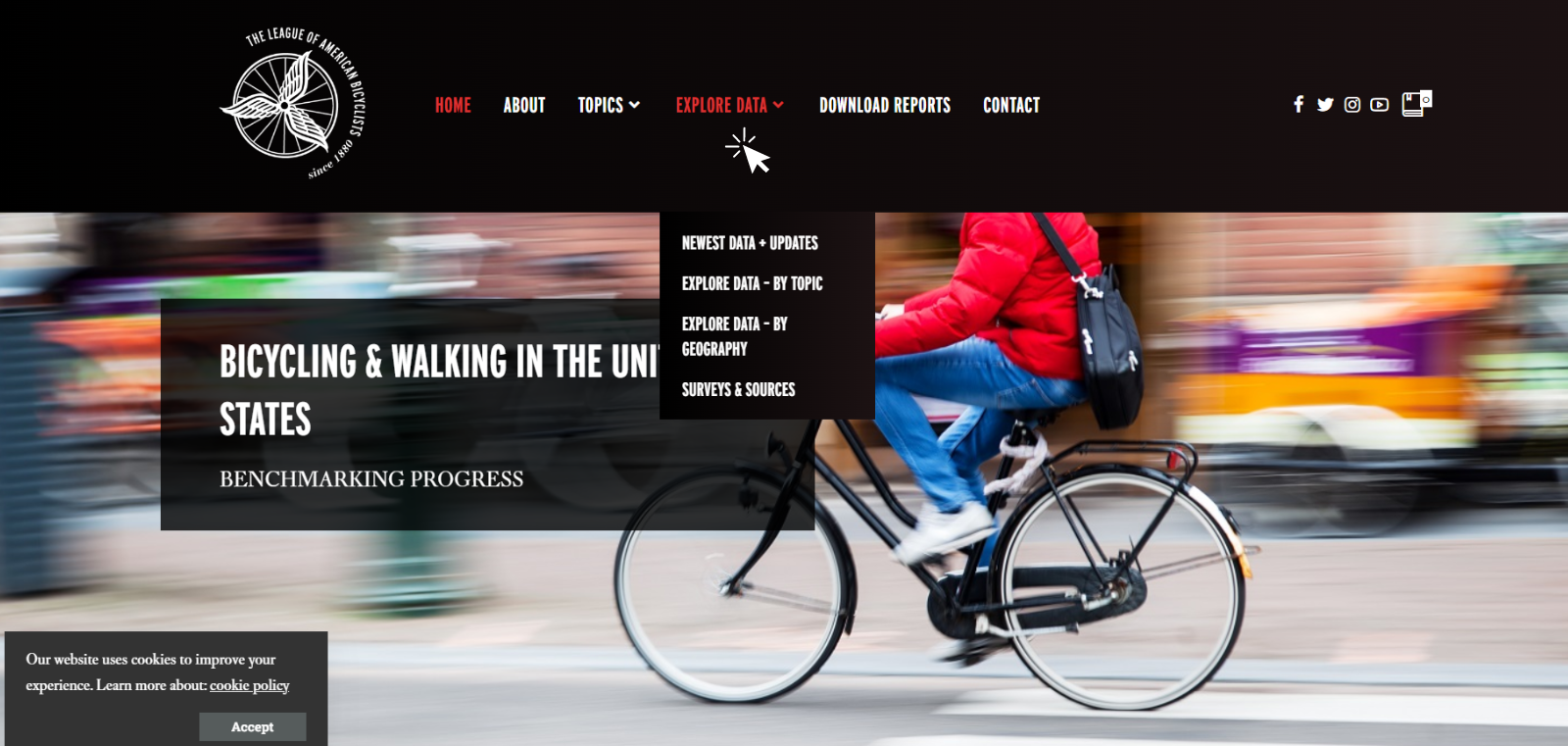DISCOVER YOUR LOCAL BICYCLING COMMUNITY
Find local advocacy groups, bike shops, instructors, clubs, classes and more!
Data on data.bikeleague.org Easier to Use Than Ever
There is a lot of data on data.bikeleague.org.
If you’re looking for a quick overview of bicycling and walking in your city or state, our fact sheets are a great place to start. They are available for all 50 states, and 76 cities that represent the 50 most populous cities in the United States, the most populous city in every state, and Platinum Bicycle Friendly Communities.
But, the data available on data.bikeleague.org goes far beyond fast facts. There are more than 130 tables, figures, and charts provided for the 76 cities, 50 states, and the United States of America as a nation across the site, with information on everything from what statewide laws exist to promote bicycling and walking to funding opportunities for bicycling and walking improvements in your community. And now our database is easier to use than ever.

Recent updates to data.bikeleague.org include:
Major menu changes
Top-level navigation was changed to reflect that the series of printed Benchmarking Reports, started in 2007 by the Alliance for Biking and Walking, continue to be published in the form of data.bikeleague.org. References to chapters and other artifacts of a written report were removed to show that the Benchmarking Report is now a continuous project providing benchmarking data through data.bikeleague.org. Topics covered in previous editions and new updated discussions are now in the menu under the “Topics” menu item.
Updates to every data chart
A holistic update of every one of the more than 130 tables, figures, and charts under the “Explore Data” menu item. In some cases this included changing images to interactive visualizations and in others it meant updating the data and display of data to make it easier to see, search, and share.
A great example of a page with significant chart updates is state data on biking and walking road safety. To make data easier to understand, topics that were previously condensed into one chart for printed editions were separated so that each safety metric – total bike/walk fatalities, bike/walk fatalities per bike/walk commuter, bike/walk fatalities per capita, and bike/walk fatalities as a percent of all traffic fatalities – gets its own searchable, sortable, chart. Demographic-related fatality data was also significantly redone to better show changes over time with respect to age and per capita rates of fatalities with respect to race/ethnicity.
More ways to access data
The “Explore Data” menu was updated so that data can be explored either by geography – nation, state, or city – or topic, with more than seven topics available for most geographies. By providing options for exploring data, this change will help people find what they are most interested in more easily. New and updated lead-in paragraphs provide more guidance on what to expect for each data page.
More links, easier browsing and sharing
Each of the more than 130 tables, figures, and charts under the “Explore Data” menu item now have their own anchor link that makes browsing and sharing significantly easier. At the top of each data page, the information on the page is linked so that users can see what is available without scrolling. When you select a link, you are taken directly to the data and can return to the top using a navigation arrow. If you want to share a chart, table, or figure you can now share a link directly to the data you want to share.
Easier access to past reports
Over the last 15 years of publication, the Benchmarking Report has provided data and discussed major initiatives of the movement for better bicycling and walking. Now all of the previous reports, over six editions, are available for download through the “Download Reports” menu item, making reviewing this history easier than ever.
At the League of American Bicyclists, we think bicycling should be commonplace — an everyday part of life. To do that, we’re making biking an easier option for more people, because when more people bike, more people benefit, even those who don’t bike. Removing barriers to bicycling must be a national priority. We hope that you enjoy this easier-to-use-than-ever data, and we hope that it helps remove barriers to making the case for bicycling and walking improvements in your community.